Whacked out News Section.

This is Universal Webs whacked out News section. Check out today's story's anyone have anything they want to see on this page all you have to do is email me with the information, thanks ladies and gentlemen. All my information is on the contact page.
Ida the 47 million year old human decedent.
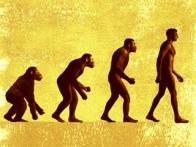
The fossil, of a young female that probably resembled a modern-day lemur, is described as "the most complete primate fossil ever found." It is small -- with a body about the size of a raccoon -- but it has characteristics found in later primates and in humans.
It has, among other things, opposable thumbs, similar to humans' and unlike those found on other modern mammals. It has fingernails instead of claws. And by examining the structure of its hind legs (one of which is partly missing), scientists say they can see evidence of evolutionary changes that would eventually lead to primates standing upright.
Worlds tallest man as of now.
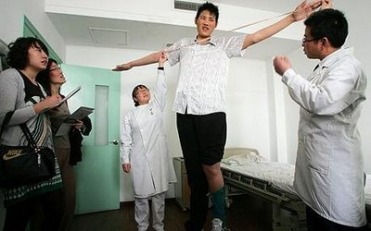
A Chinese man has become a contender for the title of the world's tallest man, after measuring in at more than 8ft.
Zhao Liang, 27, entered the Tianjin hospital for an operation to relieve pain from an old muscle tendon injury on his left foot. His height caused a stir among hospital staff who urged him to get measured properly.
They discovered that Mr Zhao is 8.07 ft tall (2.46m), making him 3.9 inches (10cm) taller than Bao Xishun, the current tallest man, who is 7.9ft (2.36m).
Mr Zhao, who lives in Henan province, had been training as a basketball player when he sustained the debilitating foot injury over a decade ago.
He was unemployed until 2006, when an art troupe in Jilin province enrolled him to perform magic tricks and play the saxophone and flute.
Zhao Liang, 27, entered the Tianjin hospital for an operation to relieve pain from an old muscle tendon injury on his left foot. His height caused a stir among hospital staff who urged him to get measured properly.
They discovered that Mr Zhao is 8.07 ft tall (2.46m), making him 3.9 inches (10cm) taller than Bao Xishun, the current tallest man, who is 7.9ft (2.36m).
Mr Zhao, who lives in Henan province, had been training as a basketball player when he sustained the debilitating foot injury over a decade ago.
He was unemployed until 2006, when an art troupe in Jilin province enrolled him to perform magic tricks and play the saxophone and flute.
Humans using a 6th sense?
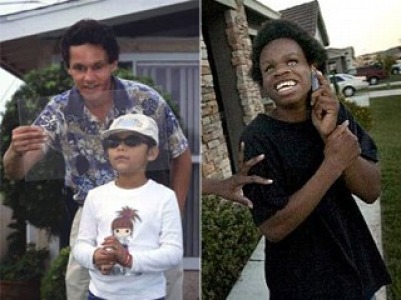
When bats go out to hunt, they send out sonar signals at such high frequencies and in such rapid bursts that they can hear the signals bounce off mosquitoes in midair. They then zero in on the insects like laser-guided missiles. Dolphins use the same technique to find their dinners. It's called echolocation, a technique that uses sound to identify objects by the echoes they produce.
Fourteen-year-old Ben Underwood of Sacramento, Calif., is one of the few people known to use echolocation as a primary means of navigating the world on land. There's not even a hint of light reaching his brain. His eyes are artificial, but his brain has adapted to allow him to appraise his environment. He makes a "clicking" sound to communicate with objects and people around him.
Scientists have discovered that in the brains of the blind, the visual cortex has not become useless, as they once believed. When blind people use another sense -- touch or hearing, for example -- to substitute for sight, the brain's visual cortex becomes active, even though no images reach it from the optic nerve. Echolocation creates its own images.
Ben says every object in his life talks to him in ways that no one else can hear or understand.
Forty-year-old Daniel Kish of Long Beach, Calif., also uses echolocation, and has become an expert on it, founding the World Access for the Blind, an organization that teaches others how to echolocate. Kish leads other blind people on mountain biking tours and hikes in the wilderness, visualizing and describing the picturesque sights around him through echolocating.
Bought to you by ABC news.
Fourteen-year-old Ben Underwood of Sacramento, Calif., is one of the few people known to use echolocation as a primary means of navigating the world on land. There's not even a hint of light reaching his brain. His eyes are artificial, but his brain has adapted to allow him to appraise his environment. He makes a "clicking" sound to communicate with objects and people around him.
Scientists have discovered that in the brains of the blind, the visual cortex has not become useless, as they once believed. When blind people use another sense -- touch or hearing, for example -- to substitute for sight, the brain's visual cortex becomes active, even though no images reach it from the optic nerve. Echolocation creates its own images.
Ben says every object in his life talks to him in ways that no one else can hear or understand.
Forty-year-old Daniel Kish of Long Beach, Calif., also uses echolocation, and has become an expert on it, founding the World Access for the Blind, an organization that teaches others how to echolocate. Kish leads other blind people on mountain biking tours and hikes in the wilderness, visualizing and describing the picturesque sights around him through echolocating.
Bought to you by ABC news.
A Pig Monkey!

Yes, this miracle happened in China and many very amused to see a Pig born with a Monkey head !! Curious people came to the owner Feng Changlin after the news spread in Fengzhang village, Xiping township in China.
The pig looks just like a monkey, with two thin lips, a small nose and two big eyes. It has rear legs which are also much longer than its forelegs, causing it to jump instead of walk.
The big question is whether this pig would live on ground or climb on trees when it grows up. People have suggested the owner to keep the piglet in observation.
The pig looks just like a monkey, with two thin lips, a small nose and two big eyes. It has rear legs which are also much longer than its forelegs, causing it to jump instead of walk.
The big question is whether this pig would live on ground or climb on trees when it grows up. People have suggested the owner to keep the piglet in observation.
100,000 dollar Saree.

Whats the cost of this saree? Rs. 40 lakh ($100,000) ?
And the shop which managed to make it customized is Chennai Silks. It has 12 precious stones + it depicts the paintings of Raja Ravi Verma. And to add to it paintings are intricately hand-woven and beautified with jewels of gold, diamond, platinum, silver, ruby, emerald, yellow sapphire, sapphire, cat's eye, topaz, pearl and corals.
A group of workers took around 5000 hours to make this saree which entered the Limca book of records.
And the shop which managed to make it customized is Chennai Silks. It has 12 precious stones + it depicts the paintings of Raja Ravi Verma. And to add to it paintings are intricately hand-woven and beautified with jewels of gold, diamond, platinum, silver, ruby, emerald, yellow sapphire, sapphire, cat's eye, topaz, pearl and corals.
A group of workers took around 5000 hours to make this saree which entered the Limca book of records.
5 Super Human powers that are Obtainable today!
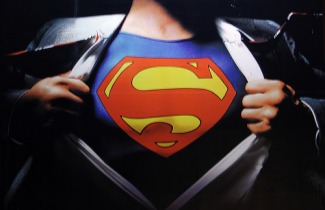
Everybody wants superpowers, from the simple innocence of a child yearning for flight to the sad perversion of the Amish man praying for x-ray vision powerful enough to peep a lady’s calves. We all want to be superhuman, and you can start right now! This is but a sample of some of the currently existing (or soon to be developed) devices that can lend the average man abilities previously relegated to world of comic books.
Super Human Sight.
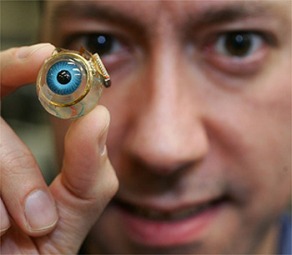
Rob Spence, a filmmaker from Canada, had his eye wounded in a shooting accident as a child. Presumably furious at its weak character and lazy work ethic, Spence asked doctors to just completely remove it a few years ago, and now he’s getting it replaced with a small camera (of the type normally used for colonoscopies,) a battery, and a wireless transmitter - effectively turning him into a human documentarian capable of recording, broadcasting, and relaying literally everything he sees, as he sees it. Clearly this is an advantage over other, larger, more expensive filmmaking crews, as it not only gives Scott a completely secret way to record, but makes him basically the world’s smallest, cheapest studio. But god, consider what he’s sacrificed to get here! Not only has he been shot in the eye, but he’s demanded that said eye be removed, years later, and then replaced with something that normally goes up your butt. The man’s got a butt-eye for christ’s sake! Van Gogh may have cut off his ear, but until he replaces it with a dick, Rob Spence wins for craziest gesture in the name of art, hands down.
Super Speed Zooom!
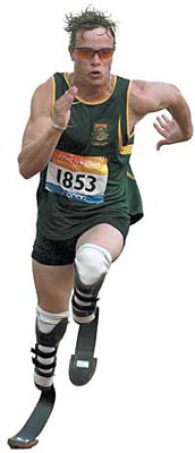
Leg amputees, if not wheelchair-bound, are often left struggling with awkward prosthetics, canes, and crutches. But now, with the aid of newly developed super-legs, even double amputees can run every bit as well as some of the world’s fastest sprinters. This all began in the 2000 paralympics (which I promise is a real thing and not just me being a bastard about wordplay) with a South African man named Oscar Pistorius who became the first amputee to complete the 200-meter dash in under 22 seconds, beating the previous world record, held by one Brian Frasure.
But there is some controversy over the legs’ use. While they only put out a 95% return of force as compared to the normal human legs’ 200% return, the running prosthetics also give the user a springing gait and increased stride distance, which could lend them an unfair advantage as well as a jaunty disposition. Considering that this story took place in the ancient days of the year of our lord, 2000, and the fact that the legs have since gone through countless permutations by a myriad of companies, many designs endow abilities well beyond typical human capacity. But there is a great tragedy being overlooked in this story: Brian Frasure, the previous world record holder, actually helped design these prosthetic carbon-fiber feet, and he was the one who gave them to Pistorius…who promptly proceeded to wipe Frasure from the record books with them. The poor bastard. He’s probably working on a time machine right now, to prevent himself from ever building these legs. If so, knowing his track record, he will most likely be thwarted when somebody inevitably uses that time machine to steal his plans and then invent it before him. He will die as he lived, crippled (by irony.)
Invisibility.. wait where did you go?
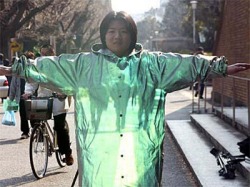
Scientists are getting damn close to inventing a true invisibility cloak. Previous efforts, like the one pictured before - while still scarily advanced - are nonetheless always slightly inaccurate, because they rely on a camera/projector technique. Recently, a paper published in the March 2009 issue of SIAM Review collected all that we currently know about the method of invisibility, and it turns out it’s a lot. We can not only render things invisible in theory by bending light waves around an object, but have even progressed so far as to be developing the metamaterials needed to bring the theory to life. So, while it’s incredibly close but currently theoretical in the private sector, who’s to say that better-funded government scientists don’t already have a secret working prototype? How would you know, after all? They could be there right now…they could be….right…BEHIND YOU! Nah, I’m just kidding. Why would they be behind you? They’re invisible, after all. They’re probably right in front of you. Or in your bathroom, depending on their inherent creepiness and the severity of their pervert-mustache.
Spider webs are cool, But dont count on me in spandex...
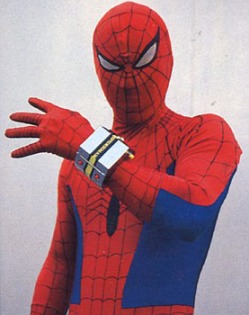
Some of us, as children, saw Spider-man’s amazing agility and web-swinging prowess and were immediately struck with jealous awe. The desperation even had some of us - who shall remain unnamed and are in no way me - microwaving spiders in an attempt to harness their radioactive bite (all right, so some of us were a little more retarded than others.) Not like Liming Dai, and Zhong Lin Wing, two professors at the universities of Dayton and Georgia Tech, respectively, who invented a material with ten times better proportional sticktion (I swear to god that’s also a word) than a Gecko’s foot. The true awesomeness of the material, however, is that the nanotube spatulae (basically microscopic hairs) design also allows the material to pull free with a well-placed tug, letting you adhere to virtually any surface as well as quickly remove from that surface for redeployment. Or, as your childhood selves would understand it: Holy Shit! We get to swing on webs now! So on the upside: Childhood dreams realized! Let’s get to work on making Transformer Best Friends a reality and we’re all set. On the downside? Prepare for a massive Darwinian strike aimed solely at the ADD infested nerd-children of America. Their awkward, flailing flips and mid-air somersaults shall bring a reaping as terrible to endure as it is hilarious to see.
Bullets bring them on, just don't aim at my face!
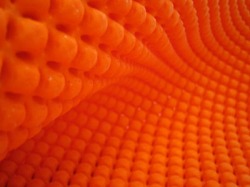
D3O (d-3-o) is an exciting new development in bulletproofing material and not, as it sounds, a generic brand version of a Star Wars robot. Or rather, it’s an impact proof material which, in conjunction with already existing bulletproof materials, could provide true invulnerability to most gunshot wounds. As it stands now, you can survive many gunshot wounds with traditional Kevlar, but are likely to feel pretty poor afterwords, as the distributed force causes fleshwounds, broken bones and large concentric bruises - like getting your ass beat by the atmosphere. Oftentimes the impact from surviving a gunshot will temporarily knock the victim unconscious as well, leaving them vulnerable with a guy that has already made his feelings clear through the administration of bullets. But D3O is set to stop that: It works kind of like cornstarch -iIt starts off as gel, but gets proportionally harder when more force is exerted on it (the dick joke here is just too easy, I have my standards.) When soft, the substance allows for greater flexure, but when rigid can reduce the strength of a bullet impact by more than half. And that’s what she said (I hate myself.) The UK Ministry of Defense has already commissioned body and head armor using the new substance, obviously seeing the potential for better protection… or just because it looks really, really fun to grab. We’re talking bubble-wrap levels of tactile stimulation here, people.
World's stupidest Criminals.

Derrick Kosch Police said a Kokomo man accidentally shot himself in the genitals as he robbed a convenience store early Tuesday.
Kokomo police said they were called to a Village Pantry store at 100 N. Ohio St. at about 4:20 a.m. after a clerk at the store called them.The female clerk told police that a man came into the store with a semiautomatic handgun, grabbed her hair and demanded cash and cigarettes before handing her a white cloth bag. The clerk said that as she retrieved the cigarettes she heard a gunshot and turned to confront the man, who yelled that he had shot himself
Kokomo police said they were called to a Village Pantry store at 100 N. Ohio St. at about 4:20 a.m. after a clerk at the store called them.The female clerk told police that a man came into the store with a semiautomatic handgun, grabbed her hair and demanded cash and cigarettes before handing her a white cloth bag. The clerk said that as she retrieved the cigarettes she heard a gunshot and turned to confront the man, who yelled that he had shot himself
Let's rob a sperm bank? wtf?

Anil Mohite Indian police have arrested two men over the theft of more than 100 sperm samples from India’s oldest sperm bank in Aurangabad, central India, national media said on Tuesday.
Anil Mohite tried to sell the stolen sperm to an infertility center in Mumbai last week for 25,000 rupees ($626) unaware of the real cost of his stolen plunder. In Europe three vials cost approximately $180 to $250.
Doctors became suspicious and contacted the police. During the investigation police discovered that Anil Mohite’s close relative worked at the Aurangabad sperm bank and both men were arrested on suspicion of theft.
Anil Mohite tried to sell the stolen sperm to an infertility center in Mumbai last week for 25,000 rupees ($626) unaware of the real cost of his stolen plunder. In Europe three vials cost approximately $180 to $250.
Doctors became suspicious and contacted the police. During the investigation police discovered that Anil Mohite’s close relative worked at the Aurangabad sperm bank and both men were arrested on suspicion of theft.
All labeled for the Law?
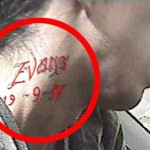
Aarron Evans
A car thief who had his name and date of birth tattooed on his neck was caught after CCTV images of him were used to track him down. Aarron Evans, 21, pleaded guilty at Bristol Magistrates’ Court to breaking into a covert capture car in the city.
The car had been left by Avon and Somerset Police officers with a covert camera concealed inside, which took pictures of Evans. Evans, an illiterate man of no fixed address, was sentenced to seven months. Supt Ian Wylie said: “Criminals won’t be tolerated in Bristol and we will keep catching them and bringing them before the courts. “We get such excellent images from these cameras that there is often, and never more so than in this case, no doubt who the criminal is.”
A car thief who had his name and date of birth tattooed on his neck was caught after CCTV images of him were used to track him down. Aarron Evans, 21, pleaded guilty at Bristol Magistrates’ Court to breaking into a covert capture car in the city.
The car had been left by Avon and Somerset Police officers with a covert camera concealed inside, which took pictures of Evans. Evans, an illiterate man of no fixed address, was sentenced to seven months. Supt Ian Wylie said: “Criminals won’t be tolerated in Bristol and we will keep catching them and bringing them before the courts. “We get such excellent images from these cameras that there is often, and never more so than in this case, no doubt who the criminal is.”
Amazing robots, wave of the future?
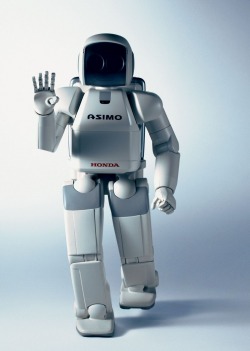
ASIMO: the humanoid robot ASIMO is a humanoid robot created by Honda. Standing at 130 centimeters and weighing 54 kilograms, the robot resembles a small astronaut wearing a backpack, and can walk on two feet in a manner resembling human locomotion at up to 6 km/h (3.7 mph). ASIMO was created at Honda's Research & Development Wako Fundamental Technical Research Center in Japan. It is the current model in a line of eleven which began in 1986 with E0.
Officially, the name is an acronym for "Advanced Step in Innovative MObility". As of 2002, there were 20 ASIMO units in existence. Each one costs $1 million to manufacture, and some units are available to be hired out for $150,000 per month.
With 2000's ASIMO model Honda added many features, labelled "Intelligence Technology", that enable ASIMO to interact better with humans. These features fall under 5 categories:
Officially, the name is an acronym for "Advanced Step in Innovative MObility". As of 2002, there were 20 ASIMO units in existence. Each one costs $1 million to manufacture, and some units are available to be hired out for $150,000 per month.
With 2000's ASIMO model Honda added many features, labelled "Intelligence Technology", that enable ASIMO to interact better with humans. These features fall under 5 categories:
- Recognition of moving objects
Using the visual information captured by the camera mounted in its head, ASIMO can detect the movements of multiple objects, assessing distance and direction. Common applications this feature would serve include: the ability to follow the movements of people with its camera, to follow a person, or greet a person when he or she approaches. - Recognition of postures and gestures
ASIMO can also interpret the positioning and movement of a hand, recognizing postures and gestures. Because of this ASIMO can react and be directed not only to voice commands, but also to the natural movements of human beings. This enables it to, for example, recognize when a handshake is offered or when a person waves and respond accordingly. It can also recognize movement directions such as pointing. - Environment recognition
ASIMO can recognize the objects and terrain of its environment and act in a way that is safe for both itself and nearby humans. For example, recognizing potential hazards such as stairs, and by stopping and starting to avoid hitting humans or other moving objects. - Distinguishing sounds
ASIMO's ability to identify the source of sounds has been improved, and it can distinguish between voices and other sounds. It can respond to its name, face people when being spoken to, and recognize sudden, unusual sounds such as that of a falling object or a collision, and face in that direction. - Facial recognition
ASIMO has the ability to recognize faces, even when ASIMO or the human being is moving. It can individually recognize approximately 10 different faces. Once they are registered it can address them by name.
BigDog: the robotic mule
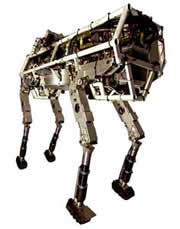
BigDog: the robotic mule BigDog is a quadruped robot created in 2005 by Boston Dynamics. BigDog is funded by the Defense Advanced Research Projects Agency in the hopes that it will be able to serve as a robotic pack mule to accompany soldiers in terrain too rough for vehicles.
BigDog is a meter long, 0.7 meters tall, and weighs 75 kilograms. It is currently capable of traversing difficult terrain at 5.3 kilometers per hour, carry a 54 kilogram load, and climb a 35 degree incline.
The dancing robot QRIO
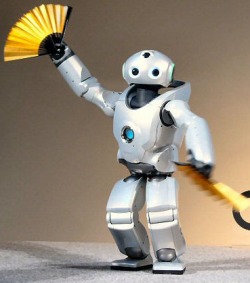
Lifehackers - Five best Netbooks.
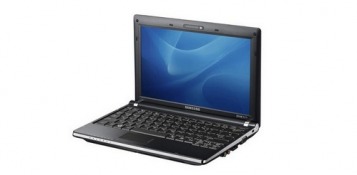
Samsung NC10 ($399)
If you're thinking about picking up an ultra-portable laptop, this week's Hive Five is a great spot to start your comparison shopping. These are the netbooks are those most loved by Lifehacker readers. Photo by nDevilTV. Earlier this week we asked you to share your favorite netbook with us. We've tallied the votes and we're back to share the top five netbooks. While every Hive Five covers things that are closely related, netbooks are known for being particularly close in description. If you're using this list as a spring board for a potential netbook purchase, we'd urge you to focus on the usability details when comparing different netbooks. Something as simple as a particular netbook having a 93% sized keyboard instead of an 80% sized keyboard can be the thing that makes up your entire relationship with your new netbook. The difference between 1.33 GHz and 1.6GHz processors, on the other hand, won't be as noticeable or aggravating as a weirdly placed shift key or a too-small trackpad. Without further ado, the top five netbooks:
Dell Mini 10 ($349)
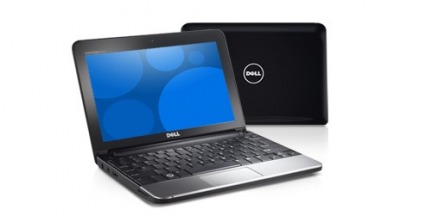
The Mini 10, thanks to the clout of being marketed and distributed by Dell, has proven to be a popular netbook. The base models sport 1.33GHz Intel Atom processors, 1 GB RAM, 160GB HDD, Wi-Fi b/g, a 1.3MP webcam, a 10.1" display, and weighs in at 2.6 pounds. If you'd like to boost the specs up to the level of some of the other netbooks on today's list, you'll pay a chain of premiums to up the processor, add a six-cell battery, and add in Wi-Fi Draft-N and Bluetooth. One thing to consider when choosing between 1GB or 2GB of RAM is that the RAM is soldered onto the motherboard, making a future upgrade impossible. The Mini 10 has an HDMI port, but no VGA port, and can be upgraded to access to Verizon's EVDO network. Despite the drawback of having to pay a little extra to get features common on similar priced netbooks, if you're interested in making a hackintosh netbook, many people prefer the Dell Mini as an easy to use platform for installing OSX.
ASUS EEEPC 1000HE ($385)
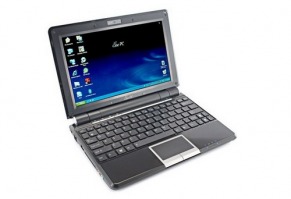
When netbooks first appeared onto most peoples' radars, it was because of the earlier EEEPC models gaining surprising popularity several years ago. ASUS has continued to crank out rock-solid netbooks, building their reputation in large part to some of the longest battery lifes. While they claim 9.5 hours under ideal conditions, under real world conditions it's more like 6—still radically better than the 3 hours you can squeeze out of most netbooks. The 1000HE sports a 92% size keyboard and a 1.6GHz Intel Atom processor, 1GB RAM, 160GB HDD, 1.3MP webcam, 10.1" display, Wi-Fi b/g/n and Bluetooth for connectivity, and weighs in at 3.2 pounds. Every ASUS netbook comes with 10GB of online storage, free for 24 months after purchase.
Acer Aspire One ($349)
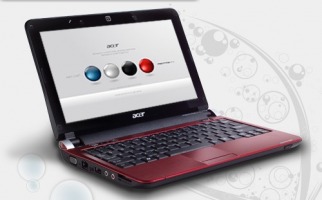
The recently revamped Aspire One now sports a bigger screen and a six cell battery for around 5 hours of run time. If you're planning on using your netbook for video conferencing or any webcam-dependent task, consider that the Aspire only sports a 0.3 MP webcam, with no option to upgrade. Other specs are more standard: 1.6GHz Intel Atom processor, 10.1" display, 1GB RAM, 160GB HDD, WiFi b/g, SD/MMC card reader, and a weight of 2.95 pounds. The Aspire can be upgraded to access WiMAX and 3G networks.
MSI Wind ($329)
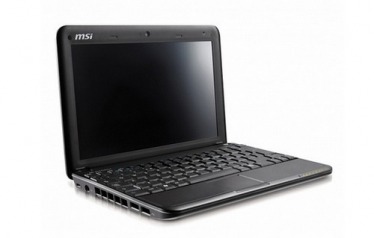
The MSI Wind is another heavyweight in the battery department. It comes standard with a six cell battery and lays claim to the same lengthy battery life the Asus 1000 series touts. The Wind has an edge-to-edge keyboard with well-spaced keys. While many people complain about how tightly packed the keys are on netbook keyboards, the Wind keyboard has keys that travel a little deeper and are just slightly further spaced than most netbook keyboards, which really helps alleviate the feeling that you're typing on a keyboard made for elves. The included Face Locker software allows you to program your face into the computer, so whenever you're not sitting in front of the computer, it will automatically lock itself and go into power saver mode. The MSI Wind sports a 1.6GHz Intel Atom processor, 10.1" display, 1 GB RAM, 160 HHD, WiFi b/g, Bluetooth, 4-in-1 card reader, 1.3 MP webcam and weighs in at 3.2 pounds.
As we emphasized above, if you're fired up to go netbook shopping after perusing the Hive Five (or reading the 127th article about them in the tech press), make sure to pay attention to the details. In a world of fairly standardized 1.6GHz processors and 1.3MP webcams, it's the little details—the spacing of the keys, layout of the USB ports—that really make the difference in how comfortable your mini-mini-computer will be in actual use. If you can't get to a brick and mortar store to actually play around with the machines, try searching Google for comparison reviews and images of your top few choices. Many gadget and laptop review sites have pictures of comparable laptops stack on top of each other, side by side, and so forth so you can see if that extra .5" really matter to you.
Now that you've seen your fellow readers five favorite netbooks, it's time to place you vote for who will go home with the crown of mobile computing greatness:
Now that you've seen your fellow readers five favorite netbooks, it's time to place you vote for who will go home with the crown of mobile computing greatness: